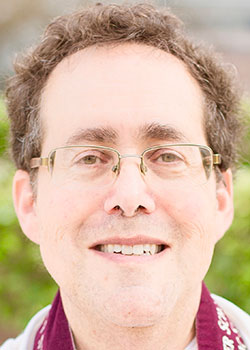The great 20th Century philosopher, Ludwig Wittgenstein, taught us to recognize our own role in construing the world. In his remarkable work, Philosophical Investigations, he coined the phrase “seeing-as” to suggest that truly seeing something requires mental organization, selecting what is significant from what is trivial, collating memories, and a host of other activities that make the act of seeing a partnership between the one who sees and the object that is seen. “Seeing-as” is another phrase for mindful experience. Living, it turns out, is not simply the passive acceptance of external data. Instead, life is the process of organizing, sifting, and internalizing the data that awaits us. Making meaning is what people do when we participate in this dynamic interaction with the world around us.
Parashat Va-Yetze offers two magnificent examples of a great spiritual giant who shares his “seeing-as” with us. Our third Patriarch, Jacob, leaves his parents’ home and flees eastward. When he reaches an un-named place near Beer Sheba, he has a vision of a ladder reaching into heaven, with angels ascending and descending in a constant flow. Awakened from his vision, Jacob is alarmed and declares, “This is none other than the abode of God, and that is the gateway to heaven!” Twenty years later, married twice, many times over a father, and wealthy to boot, Jacob returns and again experiences a vision: “Jacob went on his way, and angels of God encountered him. When he saw them, Jacob said, ‘This is God’s camp.’ So he named the place Mahanaim.”
One venerable way to understand both of these perceptions is simply as a transcript of an objective fact – Jacob just reported what was there. Indeed, no less an authority than Rabbi Moshe ben Nachman, the Ramban, tells us that the verse “refers to the Sanctuary which is the gate through which the prayers and sacrifices ascend to heaven.” This concrete understanding reminds us that the world isn’t simply the outer garb for inner values, but is itself a source of meaning and value. For Ramban, and other sages like him, Jacob’s perception of Jerusalem as the gateway to heaven is literally true: “Whoever prays in Jerusalem is considered as if he prayed before the Throne of Glory, for the gate of heaven is open there to receive the prayers of Israel.”
However commendable that view is, however, it isn’t the only possibility, nor even the only one embraced by the tradition. Ramban’s contemporary, Rabbi Abraham ibn Ezra suggests, “These are places where miracles are seen. I cannot explain why this is so because it is a deep mystery.” We need not be detained by ibn Ezra’s mystery to note the weight he places on seeing. A place where you perceive a miracle is miraculous. A place where you see God’s presence is the gateway to heaven, wherever it may be! This is seeing-as, and it is the vision offered by faith to those who believe. In this faithful approach, the gate of heaven isn’t a fact; it’s a value!
The ancient midrash, Pirkei de-Rebbe Eliezer affirms the ubiquity of God’s presence, and of the role we play in seeing that presence where we look: “Praying at any place is like standing at the very foot of God’s Throne of Glory, for the gate of heaven is there and the door is open for prayer to be heard.” Wherever you are, whenever you turn to God in prayer, that place is the gateway to heaven, that moment is the holy of holies.
That same insistence on what we bring to the encounter is found in the words of the Talmud (Hullin 91b). The Talmud asks the question, how is it possible that Jacob passed by the future location of the Beit Ha-Mikdash (the Temple) on his way to Haran and God didn’t stop him? The Gemara’s answer highlights to role of human intention and “seeing-as”: If Jacob did not set his heart to pray at the place where his ancestors prayed, should they halt him from heaven?” In other words, if he doesn’t approach the place ready to see God there, then God won’t be there for him in that place.
Seeing-as means that viewing the world through the eyes of faith is a conscious act, an affirmation that can be freely chosen or freely rejected. How we choose to see the world carries vast consequences, not least of which is whether or not we permit ourselves to stand by heaven’s gate.
Shabbat Shalom!

